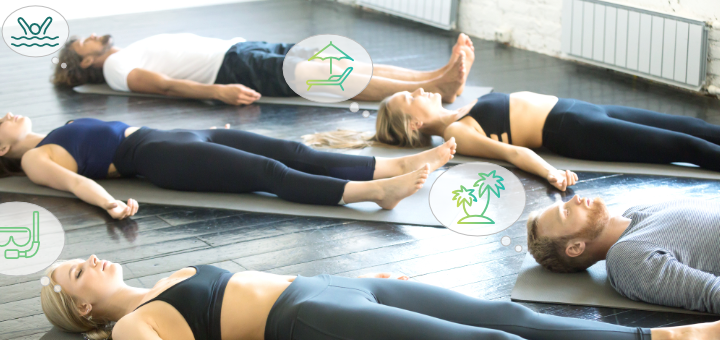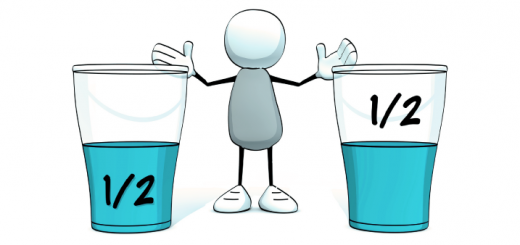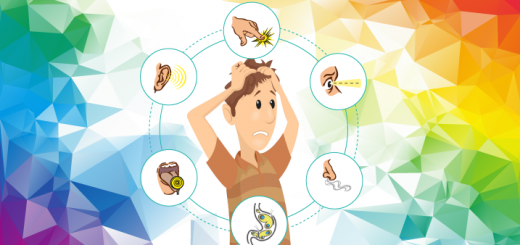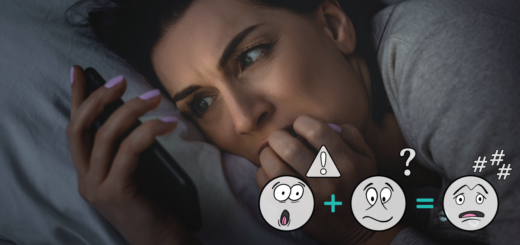How to improve your students’ experience with yoga visualizations
6Our brains store huge amounts information that needs to be kept organized and ready so that we could pull it up quickly. The brain keeps this information organized in categories, similar to how you keep your computer files in folders. This is called “categorization” and this is how your brain sorts all information. For example, you have a “folder” in your head that stores all instances of “dog” you ever encountered. So if I asked you to think of a dog, your brain would probably pull up an image of a dog you saw recently or the breed of dog you like. This is called “the winning instance” – the image that gets pulled up out of thousands of other similar images from the same category.
Here is a remarkable thing though. If you own a dog and adore it, your brain would conjure an image of your dog with a feeling of love mixed in (or what it feels like to hold it, to look at it, to play with it). If you want a dog but cannot have one right now, your brain would pull up the image of the puppy you saw in the pet store with a feeling of longing mixed in (of what it felt like to look at that puppy and want it, but not being able to take it home). On the other hand, if you were recently bitten by a dog, your brain would pull up the image of that dog and the feeling of fear you had when it happened.
The entire technique of visualization is based on that ability of the brain to pull up images tightly intertwined with your emotional-physiological responses to those images. But, of course, the tricky thing is that when you guide your students in yoga visualizations, you never know what kind of associations your students will have with those images. Imagining a beach would be relaxing for most students, but if you recently got a bad sunburn on the beach, your brain will pull up that instance and will interlace the image of the beach with how it felt to have a sunburn – not so relaxing. Or if you ask your students to imagine as if they were floating on water to facilitate a feeling of lightness and buoyancy, but one of them had a near-drowning experience at some point in the past, the feelings that come up for him would be the opposite of buoyancy and relaxation.
 Ultimately, we have no idea how individual students would respond to specific images. Because of that it is best to warn your students ahead of time of what you are planning to do (as in “We will do some imaginary floating later on – is anybody uncomfortable with that?) or give them an opportunity to opt out (“If the image doesn’t work for you, just focus on your breath”).
Ultimately, we have no idea how individual students would respond to specific images. Because of that it is best to warn your students ahead of time of what you are planning to do (as in “We will do some imaginary floating later on – is anybody uncomfortable with that?) or give them an opportunity to opt out (“If the image doesn’t work for you, just focus on your breath”).
It is also best to stick to more neutral images that are less likely to be jarring for the brain. I remember during my teacher training program one of the lead teachers was instructing us on visualization. She asked us to envision this big beautiful orange, imagine holding it in the hand, smelling it, and so on. And then she said: “Now take a nice little knife and cut it in half.” Now, I don’t have any specific experiences with violence involving knives, but even I was jolted out of my relaxed state by that image. Simply introducing an object like a knife into such a receptive state was jarring for my brain and set off the alarm bells. Other fellow teachers were even more upset afterwards. Although it was more of an oversight on the part of the teacher, nevertheless I learned a lasting lesson from that exercise – be mindful of the images you introduce into your students’ consciousness.
Our brains are constantly pulling up images of the world that are interlaced with our own emotional-physiological experiences, so we end up living in the world of our own making. This is why some scientists argue that there is no such thing as rational thought because no thought exists outside of the person’s brain. This means that every thought you have is loaded with meaning that comes from your inner state while you are having that thought. “The bottom line is this: the human brain is anatomically structured so that no decision or action can be free of interoception [inner sensations] and affect [basic feelings], no matter what fiction people tell themselves about how rational they are. Your bodily feeling right now will project forward to influence what you will feel and do in the future. It is an elegantly orchestrated, self-fulfilling prophecy, embodied within the architecture of your brain.”(1)
If all our thoughts and actions stem from our inner sensations and basic feelings, it means that creating a balanced internal environment would result in a more balanced clear-eyed outlook on life. No wonder yogis were mostly concerned with balancing their energy and physiology! How does that work exactly? We will talk about it next time. Tune in!
[jetpack_subscription_form]References
- How Emotions Are Made: The Secret Life of the Brain by Lisa Feldman Barrett




















Thank you for this helpful topic. I experienced something similar during my teacher training when the leader asked us to visualize our favorite tree while preparing for tree pose. My favorite tree was an apple tree in the backyard of the house where I grew up; shortly after we moved out the new owners cut down all of the trees, including the apple tree I loved. While I understood that the intention of the visualization was to conjure an image of something strong, rooted and that we felt a connection with, my memory brought a sense of sadness, knowing the tree was gone and that I can never return to it.
Thank you for sharing Laura! This is exactly what I mean. I am curious – do you think you would have a different reaction if the teacher asked you to visualize “a tree” instead of a “favorite tree”? Sometimes the smallest changes make a big difference.
This is an very insightful and accurate discussion of the impact of guided visualization in yoga. As a neuropsychologist trained in relaxation and visualization techniques, I am stunned how many yoga nidra “experts” appear totally oblivious to the potential psychological distress poorly conducted guided imagery can evoke. Yes, the image of a body of water is not calming to a person, who has experienced near drowning.
When I teach visualization, I ask my students to choose their own peaceful/calm/happy/safe place (real or imagined and not one of my choosing) and then slowly and systematically ask them to experience the sensory sensations associated (sight-evoking colors and textures, sounds and ways sounds resonate in their body, smells and the metacognitive association those smells evoke, touch/tactile exploration of their surroundings and taste (not necessarily relating to food but the “taste” left by the experience, words spoken and unspoken, etc.) Then I encourage them to explore the inner experience of these collective sensory sensations on their sense of “well-being” (again open ended allowing diverse individual meaning). That sense of well-being is what I encourage them to “bring back” and “hold on to” at the end of practice. In this manner minimally structured guided imagery techniques can honor each person’s unique history while creating a safe psychological experience for participants.
This is great! Thank you for sharing your insight!
Thank you for your contribution Barbara and for sharing your process! Sounds very thoughtful and respectful of students’ history. I agree that allowing students room to have their own unique experience is essential.
Thanks Elizabeth! Wine is a fun subject 😉